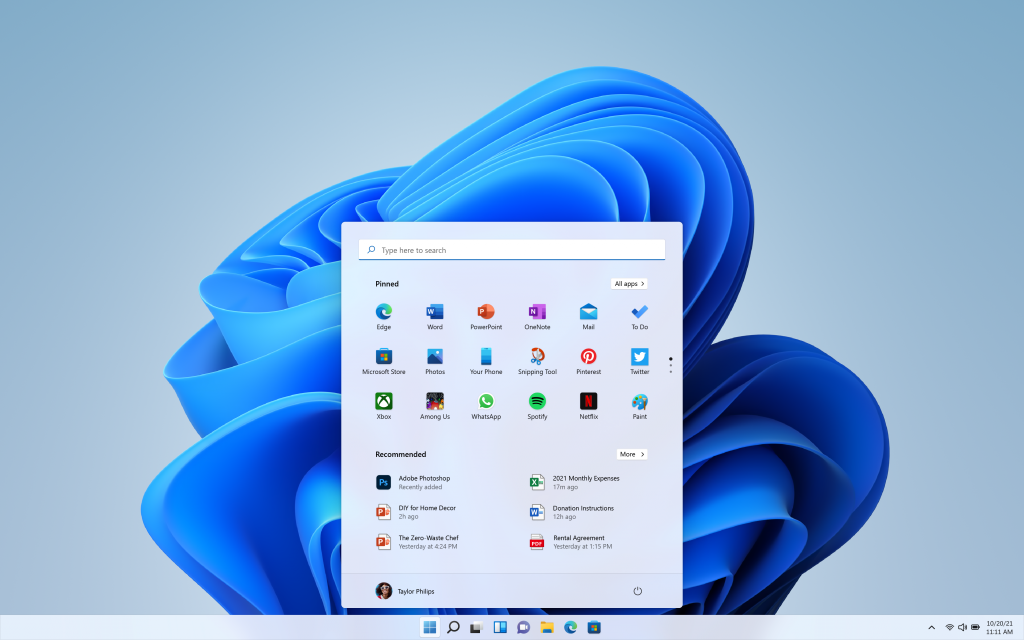

CEO Satya Nadella may be enjoying the benefits from Microsoft’s strong share price, but he and the software juggernaut still have a significant challenge ahead.
New data from IT asset management platform specialist Lansweeper has provided a pertinent insight into the reception of the Windows 11 operating system – three months on since its launch last October.
And the news is not good for Nadella and Microsoft, after Lansweeper’s data revealed that migrating to Windows 11 is not at the top of everyone’s new year’s resolution list.
Indeed, adoption of the new OS remains decidedly sluggish.
Lansweeper’s data shows less than 1 percent, just 0.52 percent of PCs, have actually upgraded to latest operating system.
And to give an idea of just how sluggish uptake of Windows 11 has been, Lansweeper revealed this 0.52 percent rate is an increase of just 0.3 percent from two months ago.
This means that Windows 11 is currently the fifth most popular Windows operating system.
And the Lansweeper data also revealed that almost 1 in 10 (9.57 percent) Windows devices scanned are running ‘End of Life’ operating systems.
Of course a significant portion of these PCs are running Windows XP and Windows 7, software which Microsoft stopped supporting in 2014 and 2020 respectively.
It should be remembered that Windows 10 was launched back on 29 July 2015, replacing Windows 8.1.
“Although we can’t track previous adoption rates of Windows Operating Systems, it’s fair to say that Windows 11 upgrades aren’t going as fast as Microsoft had hoped, especially within the business environment,” noted Roel Decneut, Chief Marketing Officer at Lansweeper.
“This could be due to the complications of upgrading to Windows 11, with less than 45 percent of devices capable of being upgraded,” said Decneut. “There are still devices being released to the market today that don’t have the hardware requirements to run it, and as Windows 10 will continue to be supported until 2025, there simply isn’t an urgent need to upgrade.”
“If enterprises want to start adopting Windows 11, the main thing is to figure out which of their existing devices are capable of upgrading,” said Decneut. “The first step is to run a device audit to figure out how many devices can move to Windows 11. From there, organisations can review the urgency and need of new systems and start creating a migration plan for the coming years.”
Decneut pointed out that whereas identifying the number of PCs running operating systems such as Windows 7 or XP can be challenging for most IT asset management providers, Lansweeper’s technology is able to automatically identify each and every device and operating system on a network.
“While Lansweeper has traditionally served business organisations, the data we provided is actually skewed towards consumers,” said Decneut. “Since Lansweeper acquired Fing in October 2020, we have worked hard to strengthen Fing’s capabilities aimed at consumers wanting to manage, monitor and secure their home networks while also integrating some of these capabilities into our enterprise offering.”
Lansweeper based its data on a sample of 10 million Windows PCs with the bulk of data (80 percent) coming from the Fing consumer app.
It is fair to say Windows 11 drew a mixed reaction from reviewers, with some mostly positive about the new features and redesigned user interface.
However reviewers were less positive about Windows 11’s onerous system requirements.
Whilst commendable on a security front, Windows 11 requires UEFI (which does the same job as BIOS) and the PC must also be secure boot capable (for which the motherboard will need a trusted module chip).
Other requirements include at least 4GB of RAM, and a couple more processor cores.
Unfortunately, these requirements (especially the first two) will force those with an older computer to purchase a new machine.
And recent research from IDC has shown that people were indeed buying new PCs during the past year, with shipments up 14.8 percent from 2020 to their highest level since 2012.
And this growth is despite the global chip shortage.
But the Lansweeper figures could suggest that not many of these new purchases are actually running Windows 11 yet.
Windows 10 remains the most commonly used operating system – by a huge margin.
On the surface Windows 11 seems to be just a major refresh of the existing Windows user interface, but there are some changes underneath hood, besides the new visuals.
That said the big change are the visuals, which have been compared to a frosted glass design with rounded corners on Windows etc.
Some have said Microsoft is trying to making Windows look more like Mac OS.
A new start menu was lifted from Windows 10X, and there is also a widgets panel, but live tiles have been removed.
The taskbar does now looks more like something found on an Apple Mac, and includes a dedicated icon for Microsoft Teams.
Under the hood, there is enhanced support for hybrid architecture processors, as well as support for direct storage.
Windows Store has been redesigned, which can show movies and TV shows regardless of streaming services, and the store is also integrated with the Amazon app store.
This means that Android apps, such as TikTok, can now run inside Windows 11.
Russian court finds Google liable for YouTube video allegedly disclosing personal data on Russian casualties…
Latest CATL sodium-ion batteries have energy density and range closer to lithium-ion units using cheap…
Amazon's AWS cloud unit pauses some leasing talks around new data centres, analysts say, in…
US trade regulator says Uber signed users up for Uber One plan without their knowledge,…
Appeals court ruling reopens case that had been dismissed, finding Shopify must face trial under…
US Justice Department lawyers argue Google must face wide-ranging remedies including selling off Chrome, with…